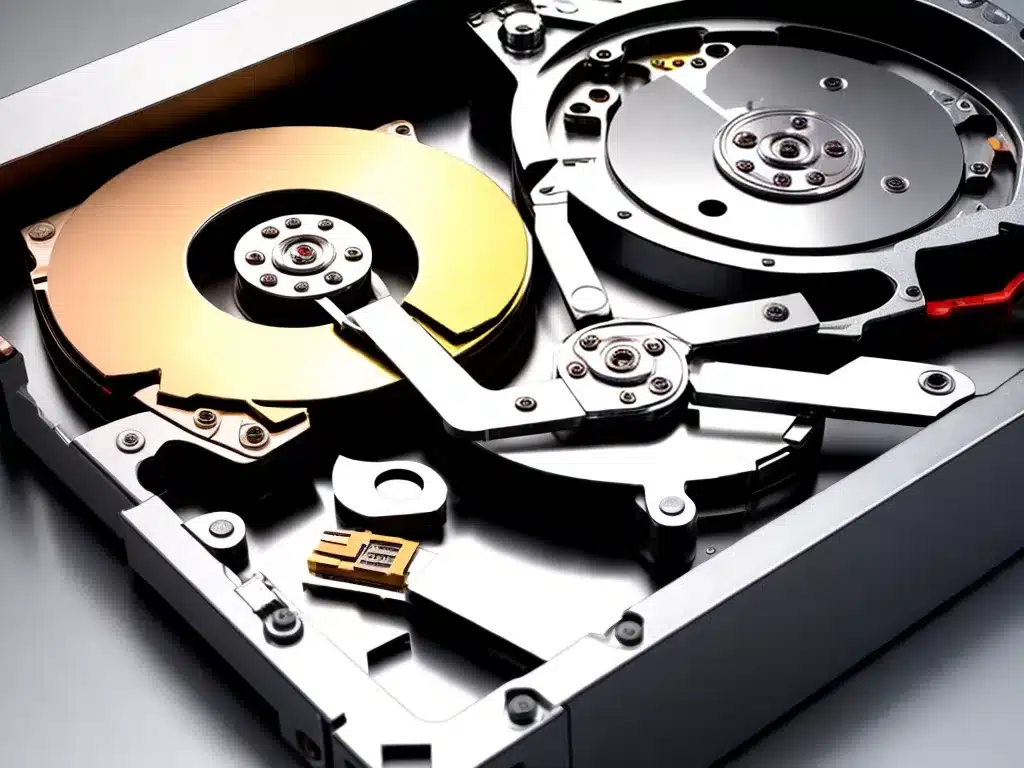
Introduction
With the increasing popularity of solid state drives (SSDs), data recovery from a dead SSD is becoming more common. As an SSD has no moving parts, the ways it can fail and methods for recovering data are different from traditional hard disk drives. In 2024, SSDs will be even more prevalent and advanced. Here is an in-depth look at the challenges, techniques, and best practices for data recovery from a dead SSD drive in 2024.
Common Ways SSDs Fail
SSDs can fail and become unresponsive in different ways. Some common failure modes include:
-
Controller failure – The SSD controller chip malfunctions making the drive inaccessible. This is the most common failure.
-
Write/erase failure – Issues erasing existing data blocks before writing new data. This causes slow performance.
-
Read disturbance errors – Reading data incorrectly due to voltage fluctuations in NAND flash memory cells.
-
Bad blocks – Portions of NAND flash memory become unusable, preventing access to data stored there.
-
Firmware bugs – Bugs in the SSD firmware can cause crashes, unresponsiveness, or data errors.
-
Power loss – Unexpected power loss while writing data leads to corruption.
-
Physical damage – Drops, impacts, water damage, etc. can break internal SSD components.
Knowing the common failure reasons helps narrow down the potential issues when attempting data recovery.
Advances in SSD Technology by 2024
SSD technology will continue advancing rapidly. By 2024, we can expect:
-
Higher density 3D NAND – More layers of flash memory cells for increased density and capacity.
-
New interconnects – PCIe 5.0 and beyond, new SATA revisions, for faster data transfer.
-
New controllers – More advanced controllers will support new NAND tech, interfaces, and improve reliability.
-
LPDDR5 memory – Faster buffer memory for the controller and cache.
-
Increased adoption of QLC NAND – QLC stores 4 bits per cell, allowing higher capacities but with lower write endurance.
-
Higher capacity SSDs – Multi-terabyte SSDs thanks to increased density and larger form factors like M.2.
-
Faster sequential read/write speeds – Pushing the limits of PCIe and SATA interfaces.
These new technologies provide higher performance and capacity but also introduce new challenges for data recovery, as we will see next.
Data Recovery Challenges with Future SSDs
While data recovery methods will also evolve, future SSDs will pose some new challenges:
-
Denser 3D NAND – More layers make failed memory cells harder to access.
-
QLC NAND – Lower write endurance and higher chance of bad blocks.
-
Faster interfaces – Higher speed NVMe SSDs will require specialized equipment.
-
Encrypted SSDs – Full disk encryption with TCG Opal or AES-XTS makes data inaccessible without keys.
-
Proprietary controllers – Closed source controllers make firmware access difficult.
-
Large capacities – Recovering multi-terabyte drives takes longer and needs more storage.
-
New form factors – M.2 SSDs and tiny wearables complicate physical data extraction.
Despite advancing tech, the need for data recovery will remain. Understanding the new obstacles will be key.
Techniques for Recovering Data from Dead SSDs
With the right tools and methods, recovering data from a dead SSD will still often be possible in the future. Here are some of the techniques:
Logical Recovery Using the Controller
If the SSD controller and firmware are still functional, logical recovery methods can work:
-
Updating firmware – May resolve firmware bugs or incompatibilities preventing access.
-
Secure erase – Can reset drive back to factory state and make data accessible again.
-
Internal diagnosis – SSD tools can diagnose errors and mark bad blocks to recover data.
Bypassing the Controller
If the controller itself is damaged, more advanced techniques are required:
-
Chip-off – Physically removing the NAND memory chips to extract raw data.
-
ISP/JTAG – Interfacing with the controller chip directly via internal test access points.
-
PCB swap – Moving the controller board to an identical working SSD clone.
These methods require specialized tools, clean rooms, and advanced skills.
Repairing/Replacing Components
In some cases, repairing or replacing failed components can provide access:
-
Replace controller – Install a working compatible controller if the original is faulty.
-
Replace PCB – Move NAND chips to new circuit board in case of PCB failure.
-
Microsoldering – Repair broken solder joints between components.
-
Transplant NAND – Move NAND chips to a new SSD enclosure.
Component-level repairs require proficiency in electronics and microsoldering.
Best Practices for Recovering SSD Data
To maximize the chances of successful data recovery from a dead SSD, experts recommend:
-
Avoid continued use – Prevent worse damage after failure detection.
-
Do not open needlessly – Only qualified pros should open to prevent harm.
-
Clone before recovery – Make complete forensic image copies first.
-
Use a cleanroom – For chip-off, component swap, etc. to avoid contamination.
-
Employ data recovery tools – Such as PC-3000 SSD, Rusolut, Atola, etc.
-
Update firmware – Get the latest firmware before recovery attempt.
-
Find an expert – Those with specific SSD training, tools, and experience.
Following best practices gives the drive its best chance to yield its data again.
The Future of SSD Data Recovery
Data recovery from SSDs will continue evolving along with the drives themselves. With new technologies and capacities coming, there will be new obstacles. But data recovery experts will also develop more advanced tools and techniques to counter these challenges. The need for recovering “dead” SSDs will persist, though the methods will have to keep pace with emerging NAND flash and SSD tech. While absolute success is never guaranteed, following best practices and leveraging the state-of-the-art tools available in 2024 will provide the best results.












